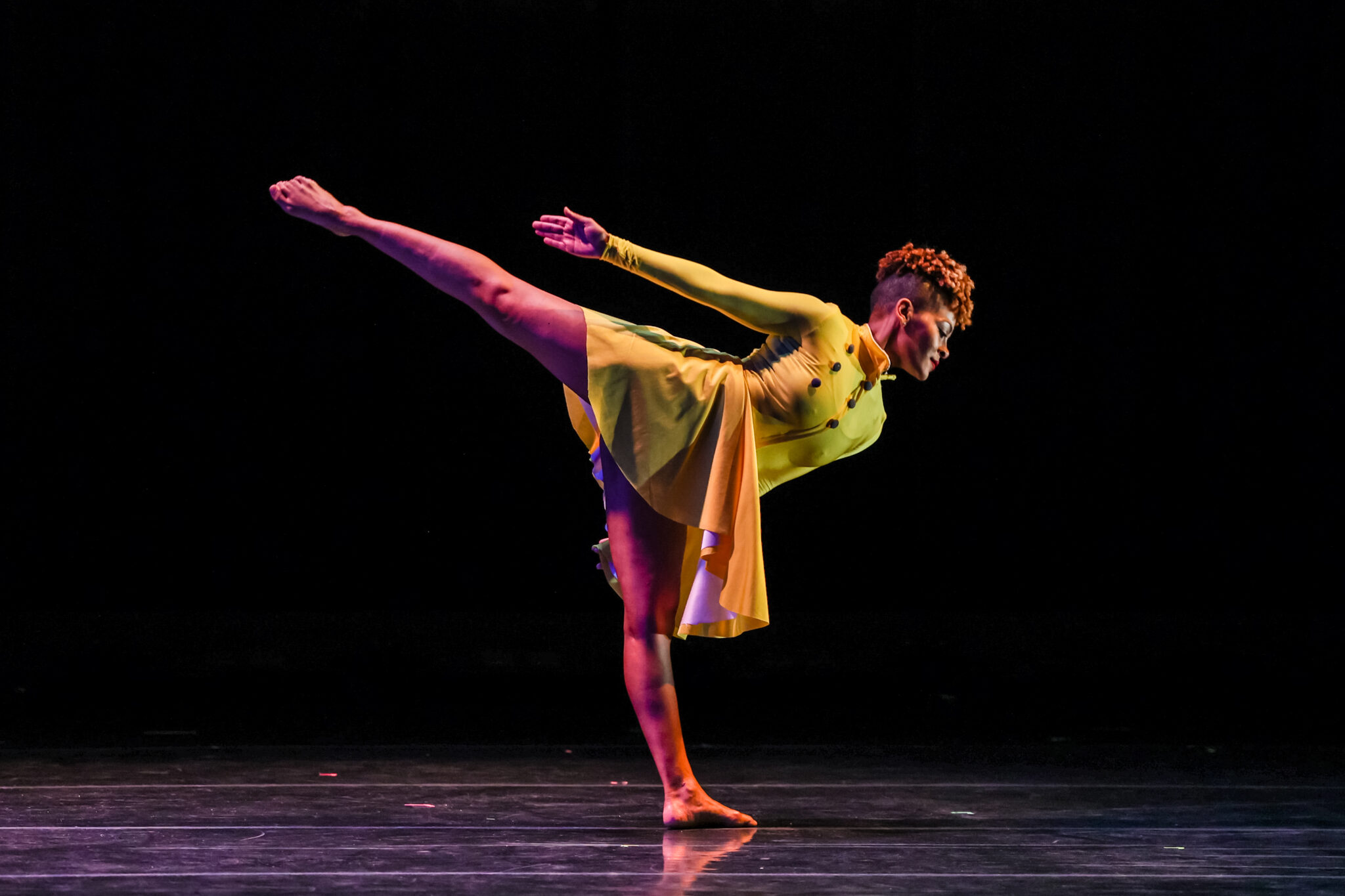Harrison Guy has been a leading voice in the Houston dance scene for more than two decades.
His performances tell stories of Black people throughout the diaspora and celebrate the beauty in our shared experiences.
Twenty years ago, Guy started his dance company Urban Souls with a shoestring budget and a powerful vision to bring Black expression to the Houston dance scene.
The culmination of this vision was expressed in his show, “Souls of Black Houston” at Hobby Center for the Performing Arts.
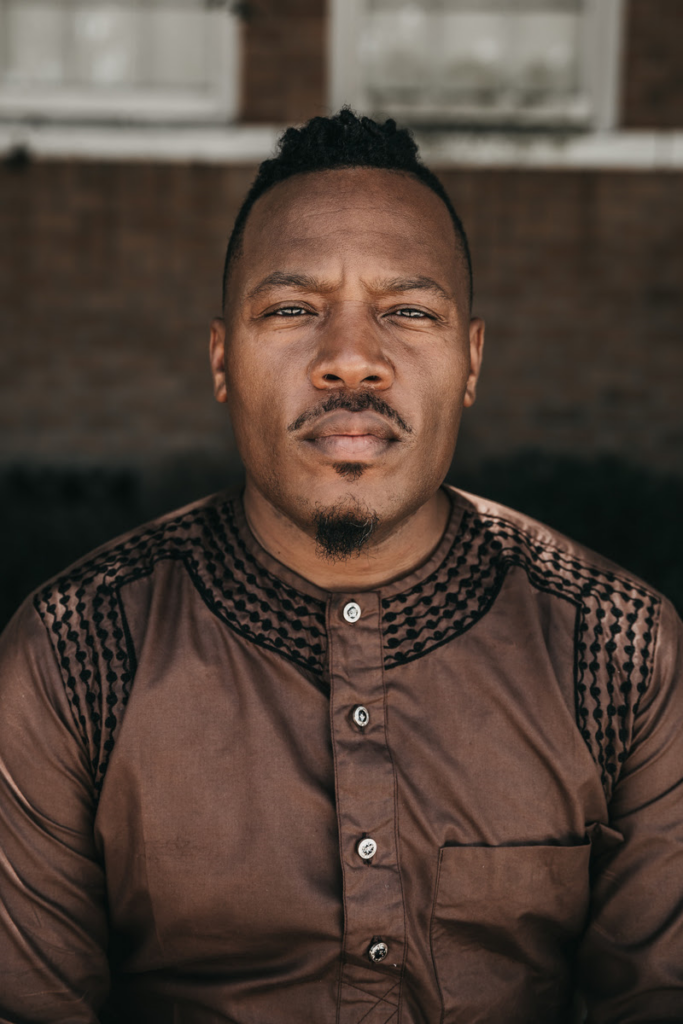
Before the show, Guy received a proclamation as a Houston Cultural Arts Icon.
Guy was so taken aback by the recognition that he was nearly speechless. However, he did manage to say one word: Grateful.
The audience was also grateful that Guy created a beautiful show that was emotional, immersive, and expressive.
Distract Me From the Mirror
“Souls of Black Houston” opened with Distract Me From the Mirror, a piece choreographed and performed by former Urban Souls dancers Uwazi Zamani and Trent Williams, Jr.
Zamani and Williams showcased their talent and vulnerability with a blend of modern and hip-hop movements.
I felt the spirit of Alvin Ailey as the two men moved gracefully across the stage.
Although the pace of this piece was slower than the rest of the pieces in the show, it allowed the audience to find our emotional center before moving to heavier topics.
Colored Carnegie
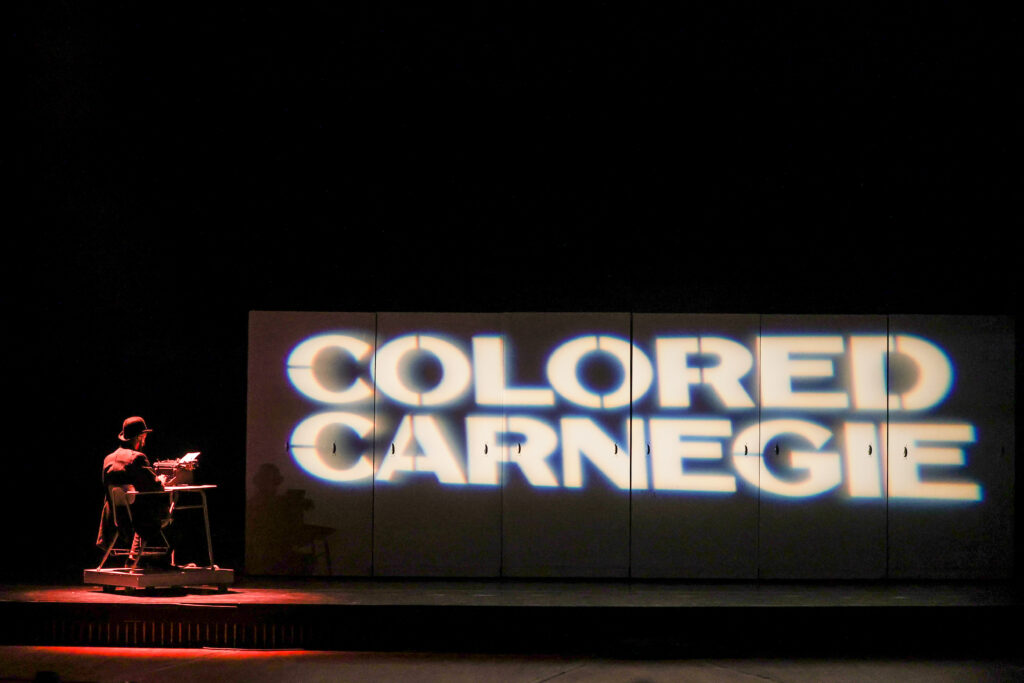
The thing I love about art is its ability to educate.
I’m a native Houstonian, and I’ve never heard the story of The Colored Carnegie Library.
Facing exclusion from the city’s white library, Houston’s Black community raised $1,500 and secured a $15,000 (about $281,000 in today’s dollars) grant from Andrew Carnegie to build their own library in 1913.
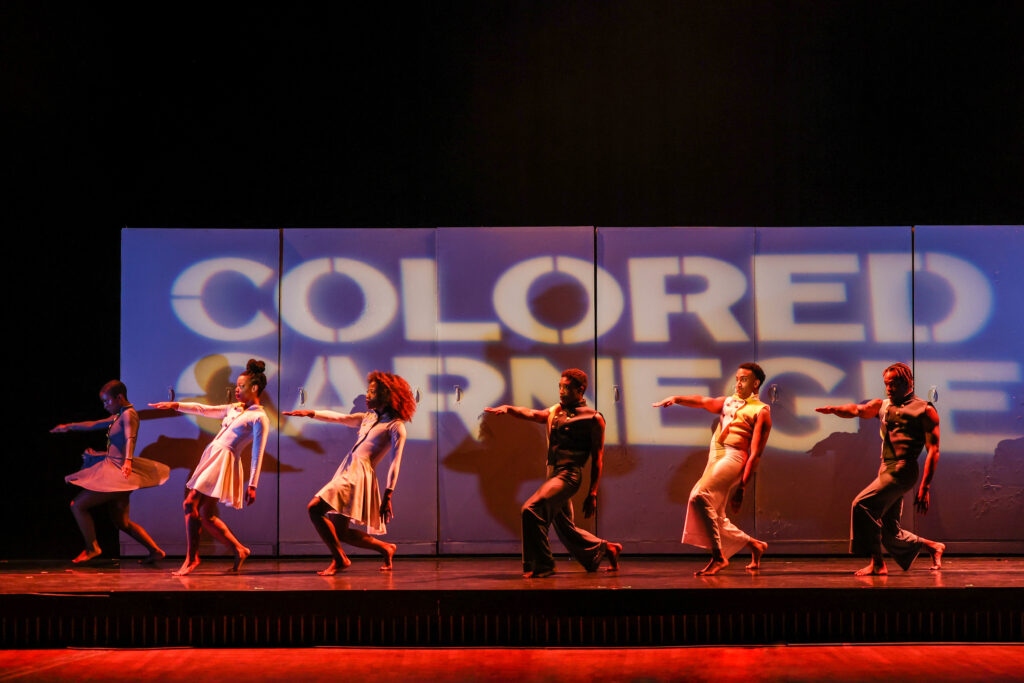
The Colored Carnegie Library became a cornerstone for 50 years, offering books, learning spaces, and a gathering place.
Despite serving as a beacon of hope and resilience, it was demolished in 1961 to make way for highway construction.
Guy was intrigued by this story and wanted to do it justice in a performance.
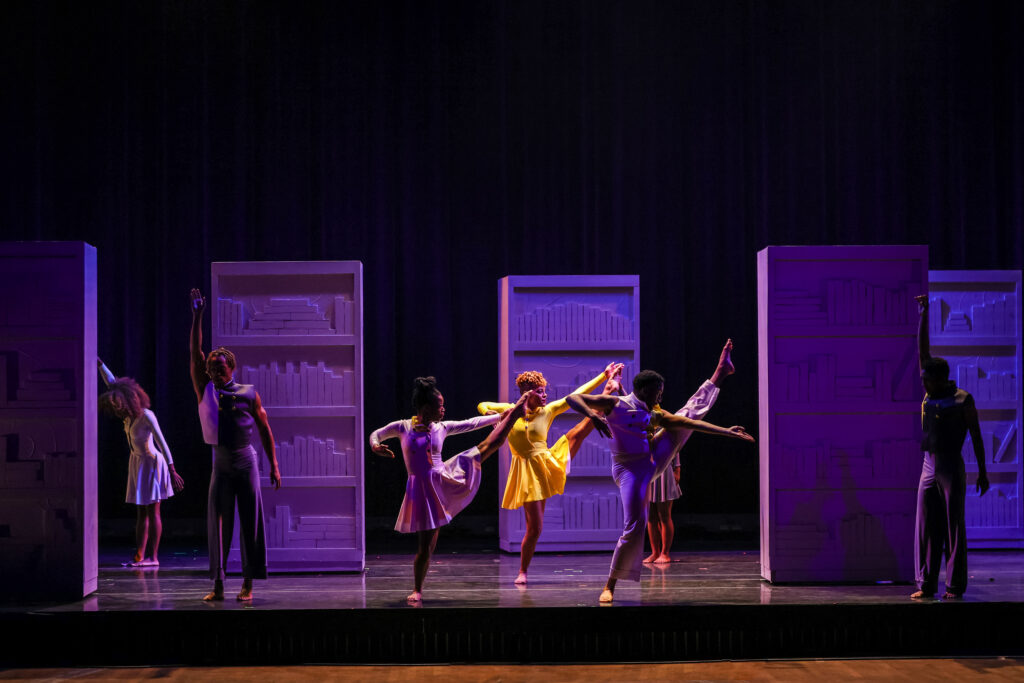
He lived with the idea for almost a decade before receiving a commission from Performing Arts Houston in 2021 for “Colored Cargenie” to be performed at Jones Hall.
“Colored Carnegie” featured an original score by Dr. John Cornelius and a stunning set design by Edgar Guajardo.

Narrator, Kazi Owens, told the story of the city’s first Black library while the dancers used movement to evoke a sense of triumph in the face of adversity.
This piece was especially poignant in an era of book bans and library closures across the country.
Sugar Shack
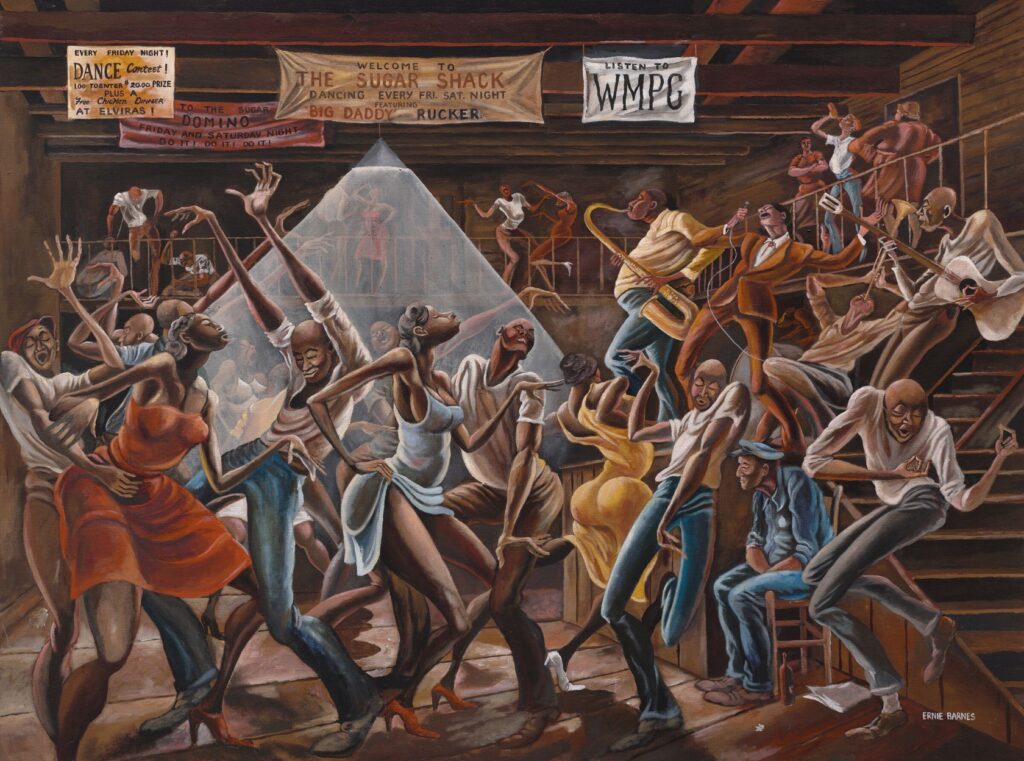
This piece was inspired by Ernie Barnes’ famous paintings, “The Sugar Shack.”
Barnes created two versions of “The Sugar Shack.”
The first version was acquired by Marvin Gaye, who featured it on the cover of his 1976 album “I Want You.” The second version, created in 1976, gained additional popularity when it was added to the end credits of the groundbreaking 1970s CBS sitcom “Good Times.” It was recently acquired by Houston collector Bill Perkins and displayed at The Museum of Fine Arts Houston.
The paintings are characterized by their vibrant colors, expressive brushstrokes, and sense of joy and movement. The elongated figures convey a sense of energy and freedom, while the warm colors create a feeling of community and celebration.
I felt all of these things while watching the performance.
DJ YUNGCHRIS got the party started by playing a series of R&B classics and telling the audience to get out their seats and move.
I’ve attended many dance performances, but I’ve never been to one where the audience was encouraged to dance.
The experience was immersive and it felt as if we were in The Sugar Shack when the dancers came onstage.
The piece was a full-on celebration of Black joy. With Music by Marvin Gaye, Earth Wind & Fire, Michael Jackson, and Lennie Williams, we took a journey down memory lane with nods to Soul Train, Rerun from “What’s Happening,” and Hip-Hop culture.
There was even a bit of comedy when one of the dancers tried to reconcile with his girlfriend with help from the classic begging ballad, “‘Cause I Love You.”
After much pleading through his movements, he finally received grace from his girlfriend as she was seduced by Marvin Gaye’s “Sexual Healing.”
After the performance, DJ YUNGCHRIS asked the women in the audience, “Would you take him back?”
“What did he do?” yelled one woman to uproarious laughter.
M/W: Lessons (Excerpt)
After the immersive experience of “Sugar Shack,” “M/W: Lessons (Excerpt)” kept the energy high with a pulsating techno soundtrack.
With this piece, choreographer Dwayne Cook has created Afrofuturism in the form of ballet.
Dancers Eric Best and McKenna Armwood displayed technical excellence, beauty, and grace with every movement.
Their performance left me wanting more.
Black Bodies in White Spaces
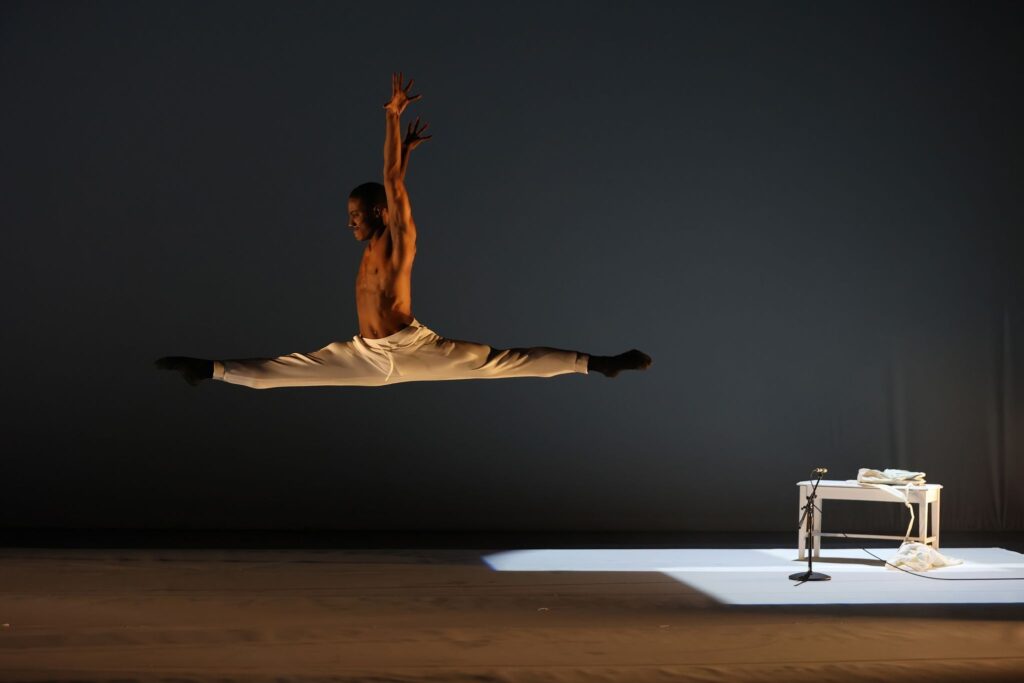
The final piece, “Black Bodies in White Spaces,” was inspired by Guy’s tenure as the inaugural artist in residence for Rice University’s Center for Engaged Research and Collaborative Learning.
“My project focused on Black students, faculty, and alumni of Rice University,” Guy said in a LinkedIn post, “We called the work Black Bodies in White Spaces and it grapples with the complexity of belonging and navigating self-acceptance.”
The piece features musicians Rainel Joubert, Rickey Lethridge, Jr., and Jamie Perry.
In addition to the Urban Souls dancers, the piece also featured guest dancers Eric Best and Prince Wayne.
“Black Bodies in White Spaces” opens with a masterful violin solo.
Afterward, a dancer portraying a student, entered the stage wearing a white hoodie and sweatpants.
As he moved through the space, he discarded his pants and shirt as haunting music played.
He was left feeling exposed, lonely, and vulnerable wearing only his black briefs.
In the next movement, a dancer, portraying a faculty member, dressed in a black suit, black shirt, white tie, and white briefcase entered the stage.
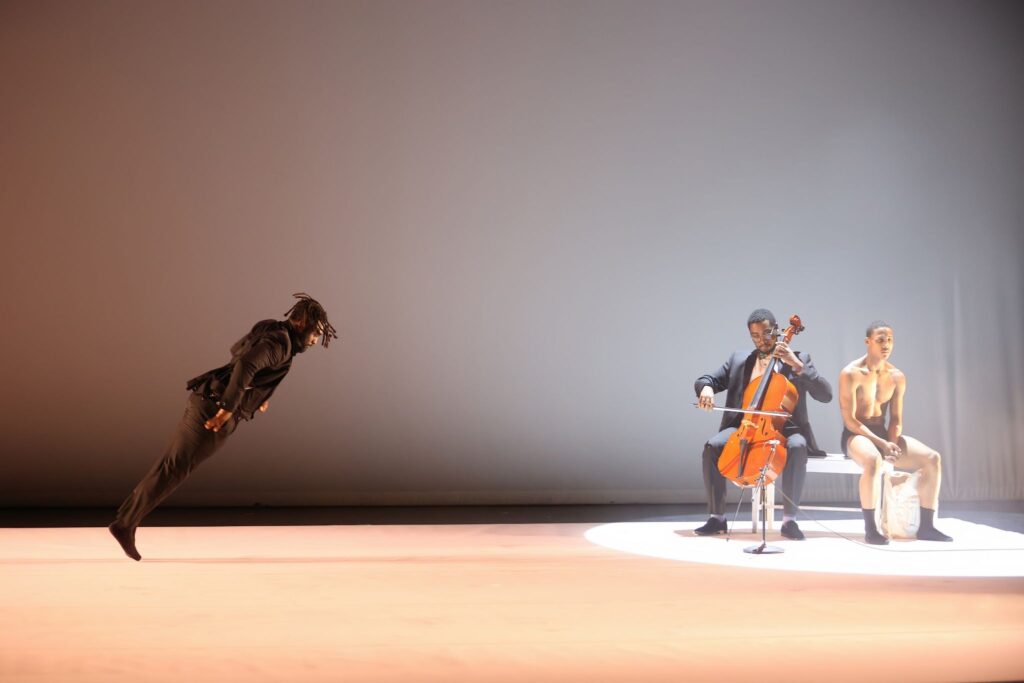
He untucks his shirt, removes the tie, and places it in the briefcase.
All of his moves are accompanied by the brilliant cellist playing nearby.
After exploring his place on campus through high-energy movements, he sat at a desk to contemplate his future.
The rest of the Urban Souls dancers, dressed in black, joined the two characters onstage and proceeded to visualize how Black people navigate white spaces daily.
At one point the dancers dipped their feet in black paint and used their movements to spread it across a white canvas. I only wish I could have seen the final product.

The piece ended with the two featured dancers transformed by their experiences and ready to return to the reality of being a Black body in a white space.
Final Thoughts on “Souls of Black Houston”
“Souls of Black Houston” is a thought-provoking performance.
While racism is explored in the show, the predominant themes are triumph, perseverance, and healing.
Harrison Guy is a talented artist and his mission to tell stories of the Black experience is fulfilled in this amazing show.
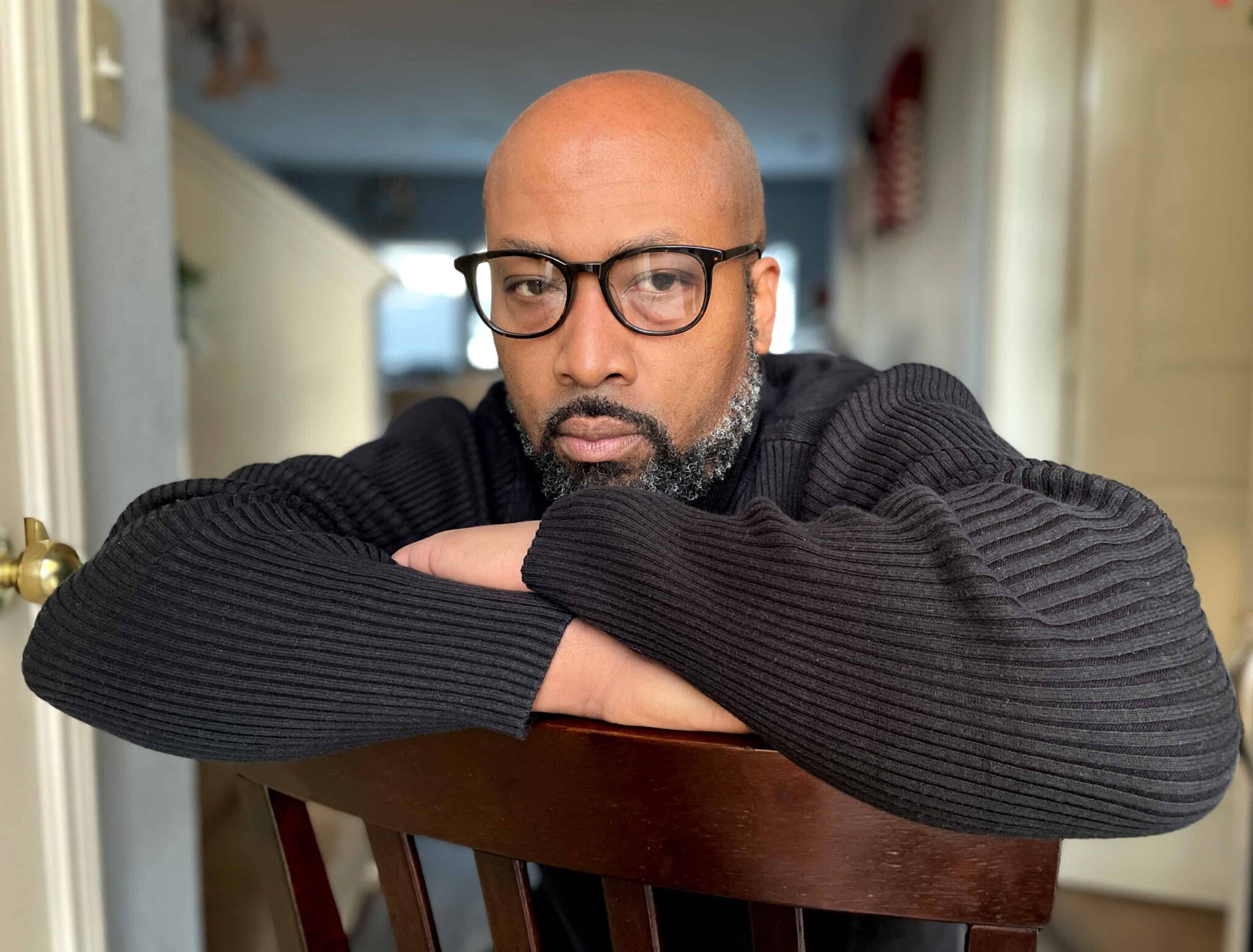
Frederick J. Goodall is the Editor-in-Chief of Mocha Man Style, media spokesperson, event host, photographer, and a top social media influencer in Houston, TX. He likes to write about fashion, cars, travel, and health.

